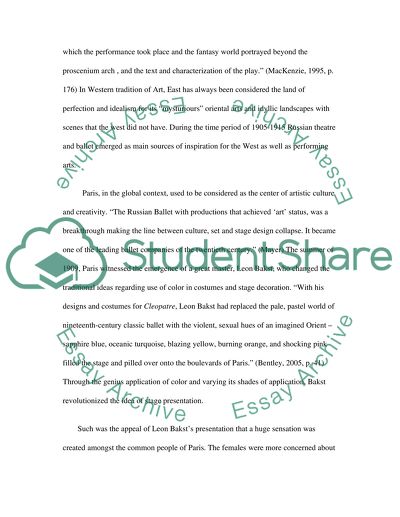Cite this document
(“Color in the Sets and Costumes of Leon Bakst Research Paper”, n.d.)
Color in the Sets and Costumes of Leon Bakst Research Paper. Retrieved from https://studentshare.org/performing-arts/1555746-essay-on-colour-in-the-sets-and-costumes-of-leon-bakst
Color in the Sets and Costumes of Leon Bakst Research Paper. Retrieved from https://studentshare.org/performing-arts/1555746-essay-on-colour-in-the-sets-and-costumes-of-leon-bakst
(Color in the Sets and Costumes of Leon Bakst Research Paper)
Color in the Sets and Costumes of Leon Bakst Research Paper. https://studentshare.org/performing-arts/1555746-essay-on-colour-in-the-sets-and-costumes-of-leon-bakst.
Color in the Sets and Costumes of Leon Bakst Research Paper. https://studentshare.org/performing-arts/1555746-essay-on-colour-in-the-sets-and-costumes-of-leon-bakst.
“Color in the Sets and Costumes of Leon Bakst Research Paper”, n.d. https://studentshare.org/performing-arts/1555746-essay-on-colour-in-the-sets-and-costumes-of-leon-bakst.


